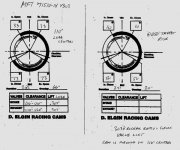lesingepsycho
Jedi Warrior
Offline
Hello everyone.
So far my engine build hasn't been going as smoothly as I had hoped for. I'm still blowing smoke pretty badly. Anyways, here's my latest discovery: oil in the intake runners. Diagnosis?
This head was just rebuilt by the guys at "British Auto Works" to the tune of $373.36 which supposedly included "Labor rebuild head, install hardened seats, surface head, hot tank and clean, install double valve springs, assemble head" <-Quoted from receipt.
What do I do?
JACK
So far my engine build hasn't been going as smoothly as I had hoped for. I'm still blowing smoke pretty badly. Anyways, here's my latest discovery: oil in the intake runners. Diagnosis?
This head was just rebuilt by the guys at "British Auto Works" to the tune of $373.36 which supposedly included "Labor rebuild head, install hardened seats, surface head, hot tank and clean, install double valve springs, assemble head" <-Quoted from receipt.
What do I do?
JACK

 Hi Guest!
Hi Guest!

 smilie in place of the real @
smilie in place of the real @
 Pretty Please - add it to our Events forum(s) and add to the calendar! >>
Pretty Please - add it to our Events forum(s) and add to the calendar! >> 

